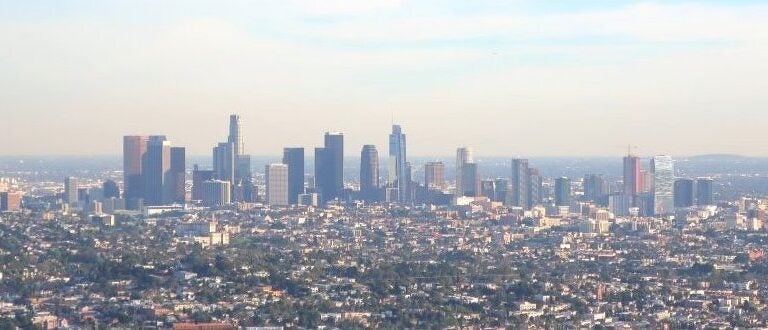
The Los Angeles skyline. Source: flickr via cultivar 413
7. A Quiet Revolution in Seaport Air Quality Management
Author: Dr. James A. Fawcett, USC Sea Grant Maritime Policy Specialist/Extension Director (retired)
Media Contact: Leah Shore / lshore@usc.edu / (213)-740-1960
Are clean air and transportation mutually exclusive? If we want clean air in Los Angeles, will it inevitably come at the cost of losing the goods movement business in our twin seaports? The Ports of Los Angeles and Long Beach have an answer for these questions: no. They are confident that they can operate and grow while at the same time doing so sustainably with respect to air quality in the South Coast Air Basin (the Basin). Read below to learn about the air quality characteristics of the Basin and the measures that have been instituted collaboratively by the two seaports and the South Coast Air Quality Management District (SCAQMD or AQMD) to maintain clean air while supporting our operating ports.
Geography
Our air basin is like a trap for air pollutants, especially those emerging from the west. Because of the rotation of the Earth, the prevailing wind in the Northern Hemisphere is from west to east, thus pollutants originating offshore (as from ship’s exhaust) or on the western side of the basin blow into it. The basin is surrounded by mountains to the north (Santa Monica and San Gabriel Mountains), to the east (Santa Ana Mountains), and then an array of transverse (east-west) mountains that further trap pollutants (Chino Hills, Baldwin Hills, Puente Hills, Simi Hills, San Rafael Hills, Santa Susana Mountains and the Verdugo Mountains). Because of these surrounding mountain ranges (some as high as 9,000 feet), air pollutants become trapped in the Basin.
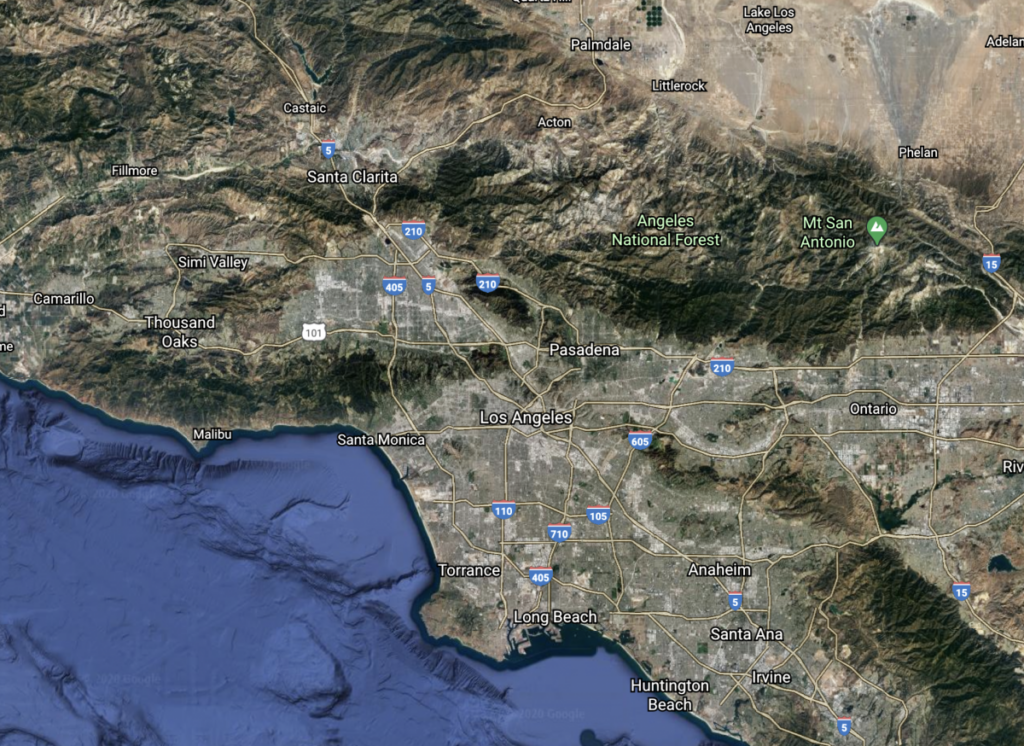
Pollutants of Concern
The federal Clean Air Act of 1963 requires the monitoring of six main criteria air pollutants: oxides of nitrogen (NOx), sulfur dioxide (SO2), ozone (O3), carbon monoxide (CO), lead, and diesel particulate matter (DPM or soot)[1]. Lead is no longer found in gasoline and is not commonly found as an emission product in marine operations, and carbon monoxide is particularly difficult to remediate because it is produced by any combustion process (e.g. petroleum burning engines). Therefore, the focus of the two ports has been upon reducing levels of NOx, SO2, O3, and DPM.
Seaports all over the world rely upon diesel engines for their operation; not only are ships powered by diesels, but so is the yard equipment used to load and unload cargo. The trucks that bring cargo and take it from the ports are also diesel-powered as are the locomotives that take cargo to other parts of our nation. One of the impacts of this wide use of diesel engines is that they tend to generate soot (diesel particulate matter or DPM) because they legally can operate on fuel not as highly refined as the gasoline in our automobiles. Very tiny particles of DPM create a health hazard for anyone breathing air containing them, especially children whose lungs are developing. Reducing this hazard was one of the prime reasons for the development of a regulated plan for emissions. The issue facing the ports and the AQMD in the early 2000s was how to reduce DPM as well as oxides of nitrogen, sulfur dioxide, and ozone.
The Clean Air Action Plan of 2006
In order to assess the air quality of the Basin and in response to the demands of citizens and their board of directors, in 2000, the South Coast Air Quality Management District (AQMD) completed a three-year comprehensive study of air quality in the basin known as the MATES II study (Multiple Air Toxics Exposure Study II)[2] to sample, document, and analyze contaminants in our air. The MATES-II study consisted of three elements: 1) a comprehensive monitoring program, 2) an updated emissions inventory of toxic air contaminants, and 3) a modeling effort to fully characterize risk in the Basin. The study monitored air quality throughout the Basin to identify general air quality as well as what it called “hot spots’ ‘ where one or more pollutants were especially abundant. The study produced maps[3] showing those areas with a higher incidence of cancers believed to be the result of the identified air pollutants. One such “hot spot” was the area around our two seaports.
The results of the study were of such concern that the AQMD sought out collaboration with the seaports to explore a program to reduce their influence on the region’s air quality. The jurisdiction of the AQMD is limited to “stationary sources” of pollution, while the responsibility for “mobile sources” (like cars, trucks and ships) rests with the California Air Resources Board. Nevertheless, the pollution caused by port operations had an effect solely within the jurisdiction of the AQMD, thus the agency intervened with the ports. What emerged in 2006 was a joint plan by the three agencies — the Clean Air Action Plan (CAAP)[4] — designed to reduce air pollution without causing drastic changes to port operations.
Working together, the two ports crafted a multi-pronged scheme to enhance air quality involving the ships, terminal operators, railroads, trucking companies, electrical utilities, and the ports themselves. The emphasis was upon shifting emissions from diesel to electricity where feasible, to grant fee reductions in some cases as incentives to cooperate with the plan, and to enforce penalties for non-compliance in other cases.
For those interested in legal matters, the cooperation of these two ports in the CAAP is of historical, legal importance. On other matters, cooperation between ports is considered illegal and in violation of antitrust laws. The ports were given an antitrust exemption from the terms of the Shipping Act of 1984 to collaborate on the Clean Air Action Plan because it was an environmental issue that affected them both equally and where their joint action was necessary to achieve its success for the benefit of the region.
CAAP: A Six-Pronged Approach
At least six major policies emerged from these discussions and were memorialized in the CAAP. Moreover, since many of the carriers (ship owners or operators) serving the two ports are registered or owned in foreign nations, to facilitate cooperation and compliance the plan was prepared in four languages: English, Mandarin Chinese, Korean Hangul, and Spanish. The plan includes six strategies to reduce emissions ranging from reducing ship speeds, providing electric power, replacing old engines, cargo equipment, regulating railroads, and creating zero-emission vehicles.
Strategy #1: Vessel Speed Reduction
To reduce pollution created by ships approaching the Basin, the CAAP encourages ships to slow to 12 knots within 40 nautical miles or 20 nautical miles of the ports. There is a financial incentive for compliance with each boundary, and these incentives are reflected in reduced dockage fees when the ships come into either port. Since all vessels of over 300 gross tons must constantly transmit a radio signal identifying itself (known as AIS or the Automated Identification System), vessels approaching the two ports can be tracked by the Vessel Traffic Service (VTS) operated by the Marine Exchange of Southern California, the VTS is aware of the identity of the vessels and whether they have complied with the speed restriction protocols. Approximately 95% of ships comply with the 20-mile limit and 40% of ships with the 40-mile limit[5]. The Port of Long Beach refers to this as their “Green Flag” Speed Reduction Program and the Los Angeles’s port refers to it simply as their “vessel reduction program.”
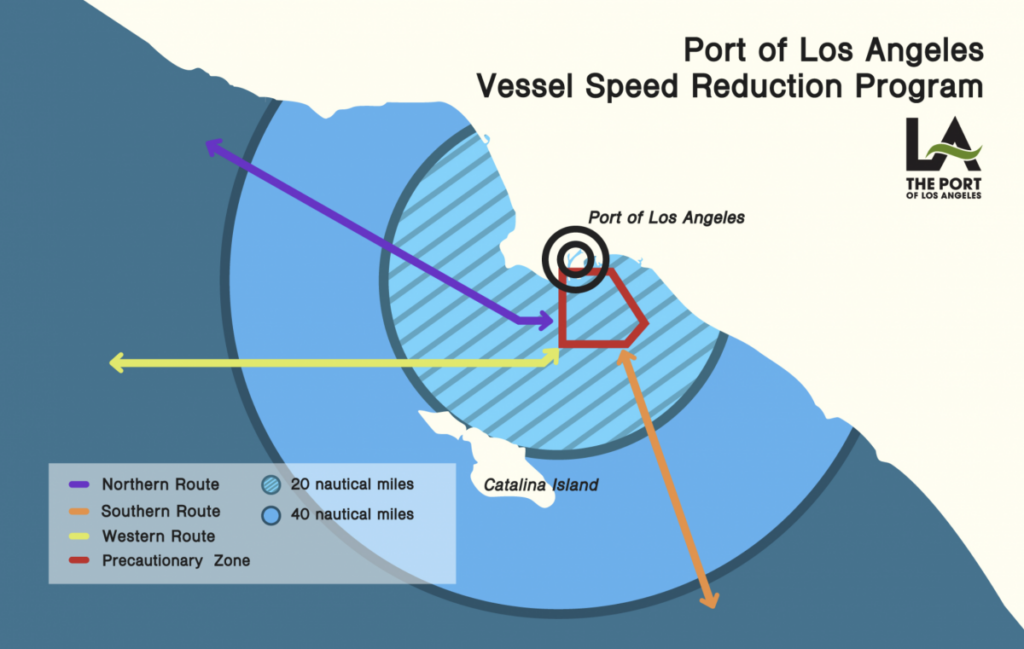
Strategy #2: Shore Power
Ships can discontinue their propulsion engines once they reach port, but they continue to generate vast amounts of power for other needs. Container ships need power for vessel cargo discharge and embarkation. Cruise ships need power for maintaining habitability for ship systems and those remaining onboard. Tank ships need power to heat crude oil for pumping. Vehicle carriers need power to ventilate as cars and other equipment are driven on and off the ship. Generating that power produces large amounts of pollution from their diesel-powered generators but that power could be produced much more efficiently with far lower emissions by large electric utilities. So, the ports committed in another part of the CAAP to make available high voltage power to permit many of these ships to “plug in” to shore power when in port. The cost of bringing adequate power to the dock was borne by the ports and the ships have needed to be retrofitted with power cables and plugs to connect to the dock. This has been a long-term project for both ports and at this time most container terminals are capable of providing adequate shore power.
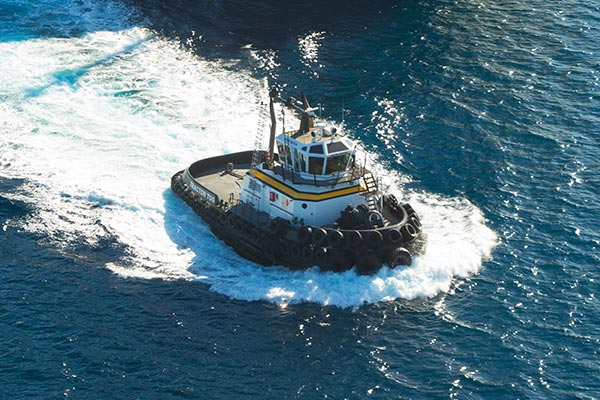
not in use. Source: Clean Air Action Plan
Strategy #3: Engine Replacement or Retrofit
Both ports have financial incentive programs for ships to replace older engines with up-to-date cleaner engines that are up to 80% cleaner than their predecessors. This applies mainly to smaller vessels since large marine diesels are foundational elements of the vessels; to remove them would be a matter of dismantling the ship.
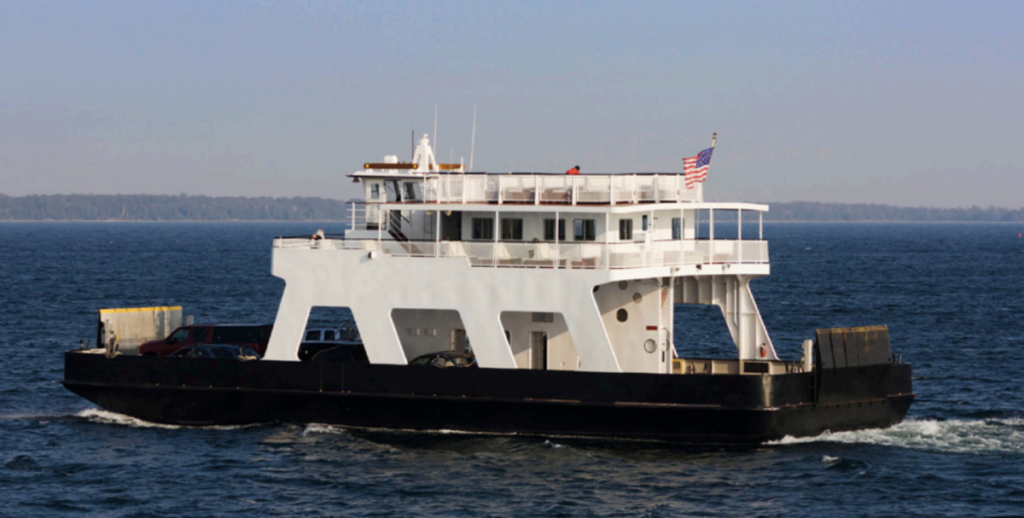
replace engines to reduce emissions. Source: CA Air Resources Board
Strategy #4: Cargo Handling Equipment
Equipment used to move cargo, because it is mobile, is under the jurisdiction of the California Air Resources Board (CARB) not the AQMD. The CARB has proposed a plan that would begin in 2026 and continue through 2031 to electrify container moving equipment in shoreside container terminals and reduce pollution from these vehicles to zero emissions.[6] In the meantime, the Clean Air Action Plan includes measures such as requiring exhaust scrubbers, use of new types of emulsified diesel fuels and some battery powered yard equipment. These measures are expected to continue as fully electric yard equipment is gradually integrated into the existing fleet over the next decade.

Strategy #5: Railroads
So-called “line haul” (i.e. long-distance/interstate) railroads are regulated by the Surface Transportation Board (STB), “an independent federal agency that is charged with the economic regulation of various modes of surface transportation, primarily freight rail.”[7] While the STB regulates rail, states can negotiate with the federal government for operations within its jurisdiction, and California did just that in 1998 under the “1998 Locomotive NOx Fleet Average Emissions Agreement in the South Coast Air Basin (1998 MOU).”[8] The focus of these regulations is to reduce the volume of NOx emitted by large diesel engines classified under different standards than marine diesels by the US EPA.
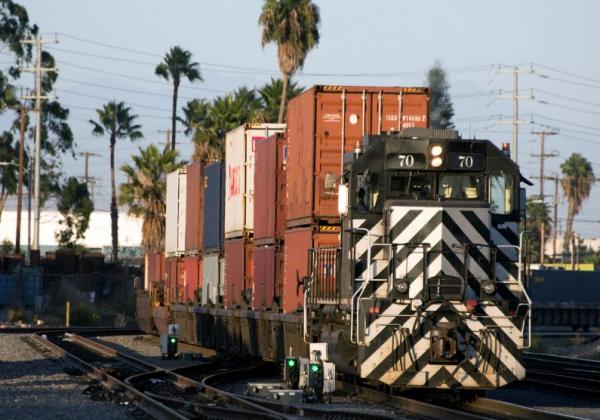
dispatching services to the Ports of Long Beach and Los Angeles. Source: Anacostia
Strategy #6: Clean Truck Program
Under the Clean Air Action Plan, the ports have a goal of zero emissions from trucks serving the ports by 2031. However, Heather Tomley, Managing Director of Planning and Environmental Affairs acknowledges in an article in the Long Beach Post that zero-emission trucks are “not yet feasible and commercially available.”[9] Moreover, for trucks moving cargo within or near the two harbors, the objective is more easily met than for trucks moving cargo between the ports and distribution warehouses, sometimes more than 100 miles from the harbor.

more than 90 percent. Source: Clean Air Action Plan
As it currently stands, all trucks serving the two ports must be a part of the Port Drayage Trucks Registry (PDTR), and only those trucks whose engines meet the EPA’s 2014 emission standards are eligible to join the registry. The ports had originally proposed that as of 2020, all PDTR trucks that were not classified as “near-zero emissions” would be assessed a fee upon entering the port. However, because of the COVID virus, that provision has been postponed. It is necessary for the California Air Resources Board, which has jurisdiction over mobile sources of pollution, to specify by regulation, definitions for both zero-emission and near-zero-emission standards for vehicles, rather than the informal definitions that are currently in place. Doing so will standardize the criteria that the ports have envisioned in the CAAP.
Leading the Future of Ports Around the World
As historically important sources of pollution in the South Coast Air Basin, the two ports have engaged their tenants and vessels in a cooperative scheme in these six areas of the CAAP, which has resulted in success and has already reduced emissions, improved air quality, and created a system to continue in the future. Cleaning up our air quality also has a role in reducing greenhouse gas emissions that contribute to global climate change, a benefit to us all. Developing and implementing a clean air action plan led to innovative ways in which emissions have been reduced and have set a standard for other seaports such that success achieved in our region has become a model that can be applied to seaports in other parts of the U.S. and perhaps worldwide.
References
[2] SCAQMD. (2000). Multiple Air Toxics Exposure Study II, Final Report. http://www.aqmd.gov/docs/default-source/air-quality/air-toxic-studies/mates-ii/mates-ii-contents-and-executive-summary.pdf
[3] SCAQMD. (2019). MATES IV Estimated Risk Map. https://scaqmd-online.maps.arcgis.com/apps/webappviewer/index.html?id=e39304122af84990b3a337307e08eea9.
[4] Port of Long Beach and Port of Los Angeles. (2006, 2010, 2017). Clean Air Action Plan. https://cleanairactionplan.org/about-the-plan/.
[5] Port of Los Angeles & Port of Long Beach. (2020). Clean Air Action Plan: Ships. https://cleanairactionplan.org/strategies/ships/.
[6] California Air Resources Board. (2020). Cargo Handling Equipment Regulation to Transition to Zero Emissions. https://ww2.arb.ca.gov/resources/documents/cargo-handling-equipment-regulation-transition-zero-emissions.
[7] Surface Transportation Board. (2020). https://prod.stb.gov/about-stb/.
[8] California Air Resources Board. (1998). Rail Emission Reduction Agreements: CARB emission reduction agreements with the Class 1 Railroads. https://ww2.arb.ca.gov/resources/documents/rail-emission-reduction-agreements.
[9] Niebla, C. (03 Aug 2020). Clean Trucks Program Update met with disagreement from truckers over fee exemptions. Long Beach Post News. https://lbpost.com/news/clean-trucks-program-update-met-with-disagreement-from-truckers-over-fee-exemptions